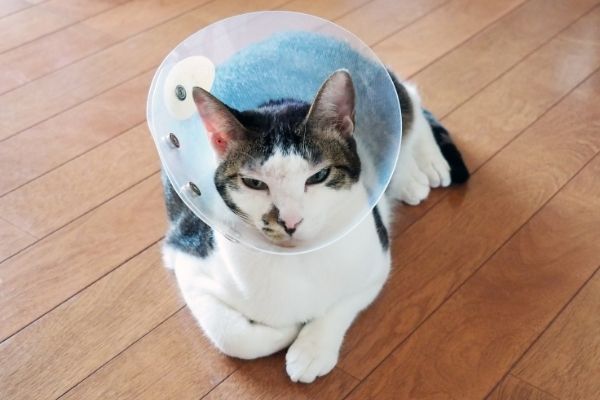 Our hearts break when pets are euthanized because their owners can’t afford critical care. Unfortunately it happens… more often than you might imagine.
Our hearts break when pets are euthanized because their owners can’t afford critical care. Unfortunately it happens… more often than you might imagine.
Many people vastly underestimate the costs of caring for a pet over a 15-year lifespan. Dog owners typically spend from $20,000 to $55,000, and cat owners spend $15,000 to $45,000, according to a new study by Synchrony.
That averages out to $111-$306 per month for dog owners, and $84-$254 per month for cat owners.
Even a basic level of pet care can run into thousands of dollars over the course of a year. During the first year alone, dog owners can expect to spend from $1,300 to $2,800. Cat owners can expect to spend approximately $960 to $2,500.
In addition to basic expenses such as food, vaccinations, grooming, and toys, one out of three pet owners will face an unexpected pet expense that causes financial worry.
61% of Americans don’t have enough savings to cover a $1,000 pet emergency.
Cats and dogs love to explore things we don’t want them to explore and eat random objects, which can easily cause an unplanned injury or illness. An unexpected visit to the veterinarian can often run anywhere from $800 to $1,500, with major medical treatment costing $10,000 or more.
Since 1 in 3 pets in the U.S. need emergency veterinary treatment in any given year, it’s likely your pet will face at least one significant accident or illness during their lifetime.
That’s why we advocate for pet health insurance. To put it bluntly, pet insurance from a reputable company can help save pets’ lives.
When to Insure Your Pet
We recommend enrolling your fur baby in pet insurance when they’re just that – a healthy baby.

Pet insurance plans rarely cover “pre-existing conditions” (conditions that showed symptoms or were treated before enrolling or during the waiting period). By enrolling your pet when they’re young, you’ll be better financially prepared to cover unexpected accidents and illnesses.
Some pets inherit health conditions, and many breeds are prone to developing specific conditions that require lifelong monitoring and treatment.
Enrolling in an insurance plan when your pet is a baby will ensure your pet is likely covered for the course of treatment your vet recommends.
Wellness Plans vs Pet Insurance
Understanding the difference between wellness plans and pet insurance is important.

Wellness plans are for preventive care.
Many are tied to the veterinary hospital from which you purchase the plan. Wellness plans spread the cost of routine preventive care over 12 months. They often include modest perks such as discounts, free nail trims, etc., making routine care a line item in a family budget.
Atlantic Veterinary Hospital offers wellness plans for kittens and puppies and adult cats and dogs.
Pet insurance picks up where wellness plans leave off. While wellness plans are for preventive care, insurance is for unplanned illness or accidents. We suggest that pet parents invest in both.
How to Choose a Pet Insurance Company
There are many pet insurance companies, many contradictory reviews floating around cyberspace, and many “sponsored links” from insurance companies who all claim to be #1.
Rather than getting sucked into the black hole of comparing umpteen companies, we suggest that you choose a plan based on the recommendation of someone you know and trust.

We’ve had a good experience with Pumpkin’s pet insurance plans, which can be found at pumpkin.pet. This inclusive plan covers the gold-standard therapy for covered conditions that we offer in our practice.
Plus, Pumpkin pet insurance plans can be used at any licensed veterinary practice in the US and Canada.
To see how Pumpkin stands out among several other pet insurance providers, run your own comparison here.
How Payment and Reimbursement Works
Pet insurance is similar to personal health insurance, where you pay a premium towards your pet’s covered vet expenses each year, regardless of whether your pet needs medical treatment.
For example, if you pay a $100 per year deductible, after that $100 is applied to an insurance-covered veterinary bill for an unplanned illness or accident, a certain percentage of additional covered costs are reimbursed by your pet insurance company.
Simplified:
- You pay your full bill at the vet.
- You submit your invoice to your pet insurance company.
- The insurance company reimburses you a percentage of additional covered costs.
Two of the Best Ways to Love Your Pet:
- Budget for their routine medical care.
- Be prepared for the unexpected.
When you thoughtfully plan for both, you’ll have peace of mind, knowing that your furry family member will receive the care it needs.
Sources
Prrs&Wags blog, Dr. Stacy Choczynski Johnson, “8 Reasons Why The Right Time to Get Pet Insurance is Right Now”
DVM360.com, “Synchrony study unveils staggering findings surrounding lifetime cost of pet ownership”
Business Insider, Eric Rosenberg, “The Best Pet Insurance Companies for Your Beloved Cats, Dogs, and More”
The Washington Post, Jeff Blyskal, “Is Pet Insurance Worth It?”


